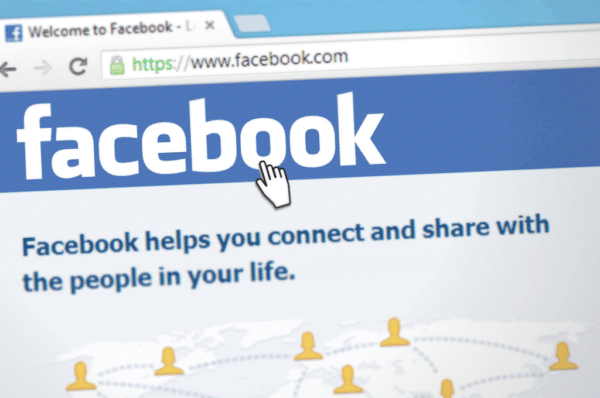With the explosive growth of technology and its applications, the concept of early adopters has been gaining more and more attention. Early adopters are the people who are the first to buy, use, and/or recommend a new technology, product, or trend. They are trendsetters and innovators. In this blog article, we will discuss what an early adopter is, their characteristics, examples of early adopters, the five categories of adopters, the early adopter’s curve, and the benefits and disadvantages of being an early adopter. We’ll also see how to identify innovators and early adopters, how to target early adopters, what motivates early adopters, and where they usually hang out.
What is an Early Adopter?
An early adopter is a consumer who purchases and/or uses a new product or technology before it becomes widely available. They are the first to buy and test a new product or technology and provide feedback on their experience. They are trendsetters and innovators who are willing to take risks and try new things.
Early adopters can also be seen as the “beta testers” of a product or technology. They are the first ones to use it and provide feedback to the company, helping to shape the product or technology before it is released to the general public. They are the ones who provide valuable feedback that helps to shape the product and make it better for the general public.
Early Adopter Characteristics
Early adopters typically possess certain key characteristics that make them stand out from other consumers.
- They tend to be more open-minded, curious, creative, and willing to take risks.
- They are also more likely to be early adopters of new technology, products, and trends.
- They are often the first ones to try new products and technology, and they are willing to provide feedback to help improve the product or technology.
- They also tend to be trendsetters and innovators.
- They are the ones who are more likely to be the first ones to try out a new product or technology and spread the word about it.
- They are often the ones who drive the adoption of a product or technology by providing feedback and helping to shape the trajectory of its adoption.
Examples of Early Adopters
One of the best examples of early adopters is the Apple fan base. Apple fans are some of the most loyal and dedicated fans of any technology company. They are the ones who are always the first to try out new Apple products and provide feedback on them. Apple fans are also some of the most vocal advocates of new Apple products and technologies. They are always the first ones to spread the word about new Apple products and technologies, and they are always willing to provide feedback and help shape the trajectory of its adoption.
Another great example of early adopters is the Tesla fan base. Just like the Apple fan base, Tesla fans are some of the most loyal and dedicated fans of any technology company. They are the first ones to buy the new Tesla cars and provide feedback on them. They are also some of the most vocal advocates of new Tesla products and technologies. Also, they are always the first ones to spread the word about new Tesla products and technologies, and they are always willing to provide feedback and help shape the trajectory of its adoption.
The 5 Categories of Adopters
There are five distinct categories of adopters that are typically used to describe the different stages of the adoption of a new product or technology. The five categories of adopters are innovators, early adopters, early majority, late majority, and laggards.
#1. Innovators
Innovators are the first to try out a new product or technology. They are usually the first ones to purchase the product or technology and provide feedback on it. They are willing to take risks and try out new products and technologies.
#2. Early Adopters
Early adopters are the second group of people to try out a new product or technology. They are typically the first ones to purchase the product or technology and provide feedback on it. They are also trendsetters and innovators who help to shape the trajectory of the adoption of a product or technology.
#3. Early Majority
The early majority are the third group of people to try out a new product or technology. They are typically more risk-averse and tend to wait and see how the product or technology is performing before they make the decision to purchase it. They are also more likely to try out a product or technology if it has been recommended to them by friends or family.
#4. Late Majority
The late majority are the fourth group of people to try out a new product or technology. They are typically the last ones to try out a product or technology before it becomes widely accepted and adopted. They tend to be more risk-averse and tend to wait until the product or technology has been tested and proven before they make the decision to purchase it.
#5. The Laggards
The laggards are the fifth and final group of people to try out a new product or technology. They are typically the last ones to try out a product or technology and often do not purchase it until it has become widely accepted and adopted. They tend to be the most risk-averse and tend to wait until the product or technology has been tested and proven before they make the decision to purchase it.
What Effect Does This Have on Our Product Adoption Strategies?
If we know that the adoption path runs from innovator to laggard with three stops along the way, we can tailor our marketing to each demographic.
The first group to be attacked will be innovators. The marketing team should have identified these individuals very early in the product development process (and not following a launch). Marketing would be expected to pique these people’s interest, involve them in early user trials, and overall secure their support.
In terms of design, user research conducted with innovators can be quite beneficial in producing prototypes prior to a more mass market final design.
Following innovators, early adopters will be sought; they, too, may be addressed prior to a product launch, with an emphasis on research into what this sector requires. Marketers may choose to provide more technical insights or behind-the-scenes development perspectives to early adopters in order to encourage them to share their thoughts with those who follow their thought leadership.
Any product’s mass market introduction must be appealing and helpful to early adopters if it is to persuade those thought leaders to encourage further product uptake.
Read Also: Marketing Myopia: Definition and How to Avoid it
The early majority, on the other hand, will most likely be targeted through more general marketing tactics, with the goal that their relationship with the early adopters will promote word-of-mouth sales. Designers may wind up catering to the early majority by iterating on the product and improving it.
The late majority will most likely emerge as product differentiation happens and the product has established itself in a certain market niche. Marketing targeting this group is likely to be less aggressive in terms of direct marketing and more focused on special offers and promotions to entice customers to choose one product over another in a competitive market.
Targeting laggards with direct marketing may be utterly uneconomic, and it is likely that by the time they accept a product, it is in decline, and that pricing and general awareness of the product will most likely drive adoption from this group.
The Benefits of Being an Early Adopter
Being an early adopter of a product or technology can provide a number of benefits. One of the main benefits is that you can get access to the product or technology before it is available to the general public. This means that you can get a head start on using the product or technology and can provide valuable feedback to the company that can help shape the product or technology before it is released to the general public.
Another benefit of being an early adopter is that you can be seen as a trendsetter and innovator. You can be the first one to try out a new product or technology and spread the word about it. This can help to drive the adoption of the product or technology and can help to shape its trajectory of adoption.
Finally, being an early adopter can provide you with a sense of accomplishment and pride. You can feel good about being one of the first ones to try out a new product or technology and being able to help shape its trajectory of adoption.
The Disadvantages of Being an Early Adopter
Being an early adopter of a product or technology can also come with some disadvantages. One of the main disadvantages is that you can be the first one to experience any issues with the product or technology. This means that you can experience issues that may not be experienced by the general public and can be a source of frustration.
Another disadvantage of being an early adopter is that you may be seen as a trendsetter and innovator, but you may not always be credited for it. You may be the first one to try out a new product or technology and spread the word about it, but you may not always be credited or rewarded for it.
Finally, being an early adopter can come with a certain amount of risk. You can be taking a risk by being the first one to try out a new product or technology and you may not always be rewarded for it.
How to Identify Innovators and Early Adopters
Identifying innovators and early adopters is an important step in the marketing process. Identifying these types of consumers can help marketers to better target their message and reach the right people.
One way to identify innovators and early adopters is by looking at their demographic information. Innovators and early adopters tend to be younger, more educated, and more tech-savvy than the general public. They also tend to be more open-minded and willing to take risks. Looking at their demographic information can help to identify potential innovators and early adopters.
Another way to identify innovators and early adopters is by looking at their purchase history. Innovators and early adopters tend to be the first ones to buy and use a new product or technology. Looking at their purchase history can help to identify potential innovators and early adopters.
Finally, another way to identify innovators and early adopters is by looking at their online activity. Innovators and early adopters tend to be active on social media and other online platforms. They are also more likely to engage in conversations about new products and technologies. Looking at their online activity can help to identify potential innovators and early adopters.
How to Target Early Adopters
Once you have identified potential early adopters, the next step is to target them with your message. Targeting early adopters is an important step in the marketing process as it can help to drive the adoption of a product or technology.
One way to target early adopters is by engaging with them on social media and other online platforms. Early adopters tend to be active on social media and other online platforms, so engaging with them on these platforms can help to build relationships and create awareness of your product or technology.
Another way to target early adopters is by offering incentives and rewards. Early adopters tend to be more motivated by rewards and incentives, so offering rewards and incentives can help to drive the adoption of your product or technology.
Finally, another way to target early adopters is by offering exclusive access to your product or technology. Early adopters tend to be more motivated by exclusivity, so offering exclusive access to your product or technology can help to drive the adoption of your product or technology.
What Motivates Early Adopters
Knowing what motivates early adopters is an important step in the marketing process. Knowing what motivates early adopters can help marketers to better target their message and reach the right people.
One of the main motivators for early adopters is the desire to be the first one to try out a new product or technology. Early adopters tend to be more open-minded and willing to take risks, so the thrill of being the first one to try out a new product or technology can be a powerful motivator.
Another motivator for early adopters is the desire to be seen as a trendsetter and innovator. Early adopters tend to be more creative and driven, so the desire to be seen as a trendsetter and innovator can be a powerful motivator.
Finally, another motivator for early adopters is the desire for rewards and incentives. Early adopters tend to be more motivated by rewards and incentives, so offering rewards and incentives can be a powerful motivator.
What Is the Early Adopter Tax?
The early adopter tax is the premium that early adopters pay for new technology since new technology always costs more when it is released. In addition to the cost, the early adopter tax involves unresolved faults and defects in new technology, as well as missing out on additional features incorporated in subsequent generations.
What Is the Percentage of Early Adopters?
Early adopters account for approximately 13.5% of the population.
Where do Early Adopters Hang Out?
Knowing where early adopters hang out is an important step in the marketing process. Knowing where to find early adopters can help marketers to better target their message and reach the right people.
Early adopters tend to hang out on social media and other online platforms. They tend to be more active on social media and other online platforms, so engaging with them on these platforms can help to build relationships and create awareness of your product or technology.
Early adopters also tend to hang out in forums and discussion groups. They are more likely to engage in conversations about new products and technologies, so participating in forums and discussion groups can help to build relationships and create awareness of your product or technology.
Finally, early adopters also tend to hang out at events and conferences. They are more likely to attend events and conferences related to new products and technologies, so attending these events and conferences can help to build relationships and create awareness of your product or technology.
Conclusion
In conclusion, early adopters are trendsetters and innovators who are willing to take risks and try out new products and technologies. They are the first ones to buy, use, and/or recommend a new product or technology, and they are the ones who help to shape the future of a product or technology by providing feedback and helping to shape the trajectory of its adoption.
Knowing what early adopter is, how to identify them, target them, what motivates them, and where they usually hang out can help marketers to better understand early adopters and target them with their message.
If you are looking to target early adopters, then this blog article should provide you with the information you need to do so. Understanding early adopters and knowing how to target them can help to drive the adoption of your product or technology and can help to shape its trajectory of adoption.
Related Articles
- WHAT IS PRICE SKIMMING: Examples, Advantages & Disadvantages
- Dollar Cost Averaging: Is Right For You? (+ Quick Tools)
- Wants and Needs: How to Identify & Address Your Customer’s Needs
- Strategies Gambling Industry Uses to Attract Customers
- Diversifying Portfolios: Meaning, Pros, Cons & How-to Guide






